An ode to all things dark and sweet, here's a recipe to up those fresh or dried black trumpet mushrooms: mixed in with some caramelized shallots and reduced down to a sweet-savory condiment for a hunk of meat, although it makes a great tart filling, coarsely chopped, too.
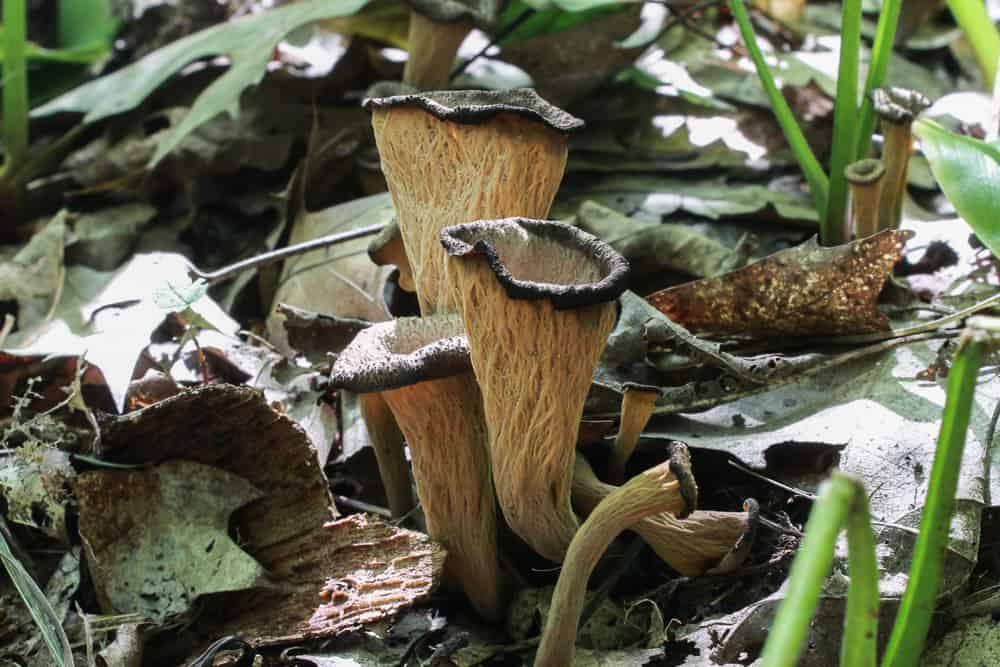
It came about as I was looking for something to replace what I thought was a rather derivative/late 90's themed dish of steak with demi glace, caramelized onions and blue cheese crumbles from a bag I inherited on a menu.
But, whatever I replaced the blue chees-y sauce with, putting more prep on my plate or the line cooks was not an option. It had to be a one-pan pick-up, heat and serve, mindless, and fool-proof.
It's a super simple preparation, but there's plenty of technique in something this basic, too. Here's some of the reasons it's great, and some of the finer preparation points. It all has to do with the shapes the mushrooms and shallots are cut into.
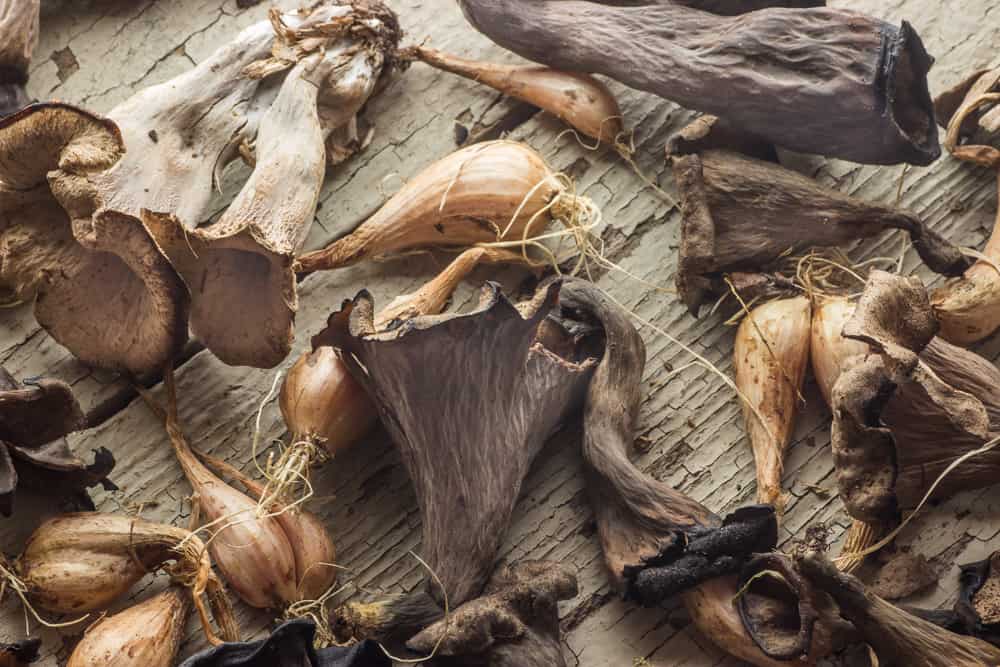
Julienne the shallots, keep the mushrooms whole
It's important that the shallots are cut into julienne so they blend and tangle with the mushrooms. This way, the guest gets some of each in every bite without having to spear things on the plate. It's a simple forethought that increases the chances of people saying "oh this is so good" without understanding exactly why they think so.
The previous preparation I designed this to take the place of was made with diced caramelized onions--a lazy method.
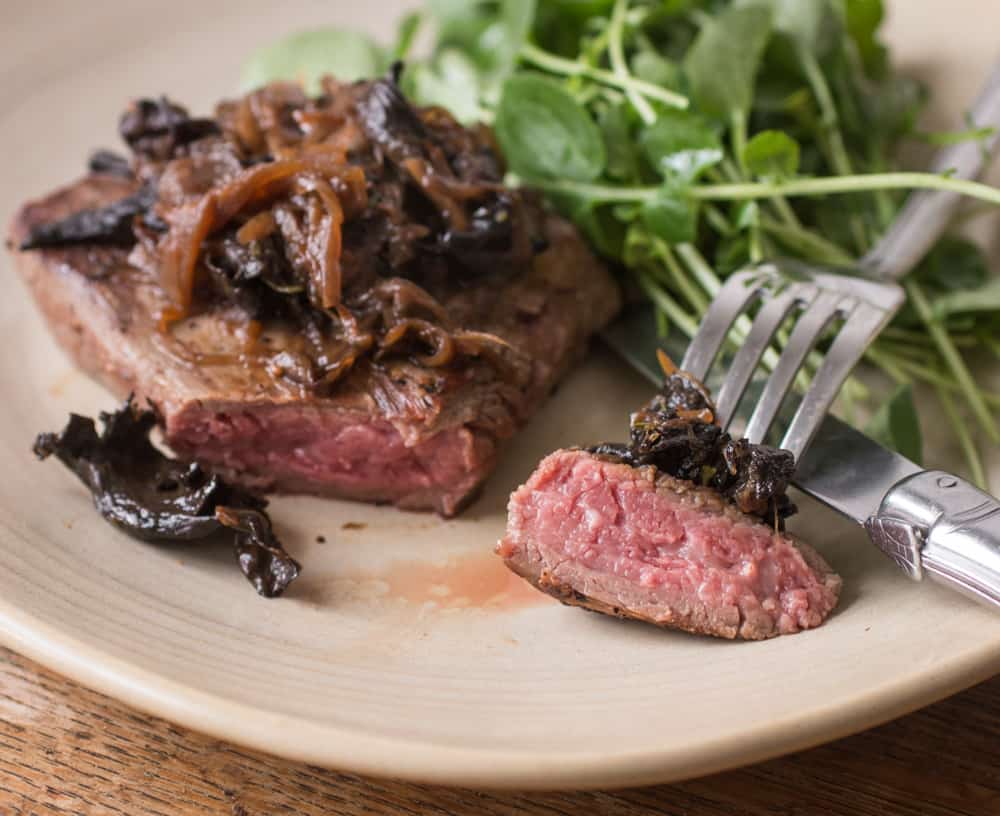
The shape of the mushroom is important too. There's a tendency with cooks to chop things up, make funky shapes and, basically overthink things.
With black trumpets, part of what is so fun is their shape, so in this recipe, dried black trumpets are reconstituted and added whole, although there would be nothing wrong with using fresh.
Since the mushrooms are dried, they actually hold their shape a bit better than if they were fresh, since fresh they'll wilt down a bit after cooking. Each mushroom you chew is a chance for the deep, sweet aroma of the trumpets to creep into your palate.
If the mushrooms were cut, or say, minced for example, the shallots could overpower their flavor, and the black trumpets might as well get thrown in the garbage. With both the shallots and mushrooms in complimentary shapes, the flavors combine well.
This is scaled from a very large batch. It will make enough for 4-8 portions, depending on how much you put on, and how much you like caramelized onions.
Feel free to scale it down by half. If you don't have shallots near you, it's ok to reach for an onion, but don't caramelize red onions (they're not meant for cooking, for the most part, and develop a unpleasant color), just use a common yellow sweet, vidalia, etc.
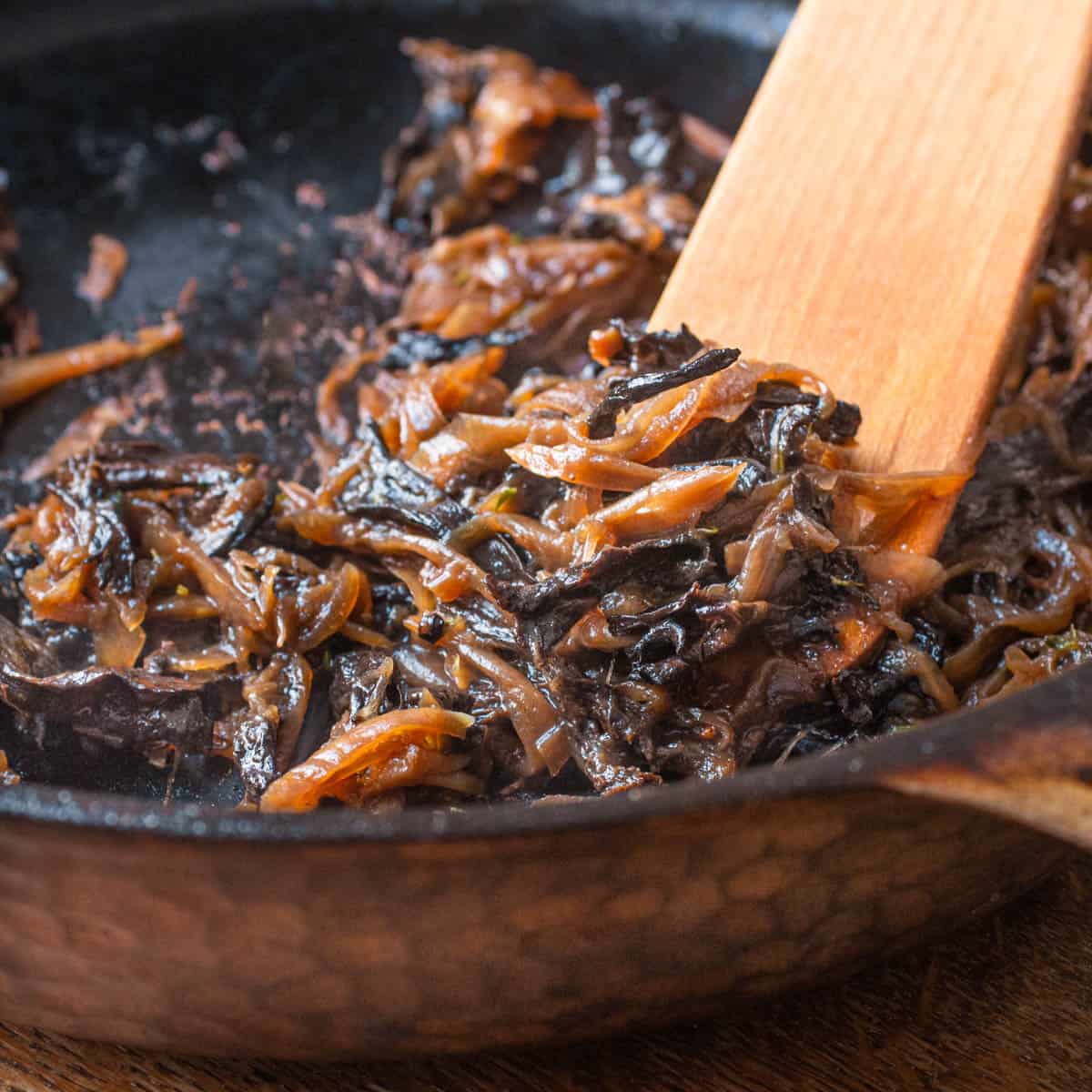
Caramelized Shallots and Black Trumpet Mushrooms
Equipment
- 1 10 inch cast iron pan
Ingredients
- 1.5 lbs whole shallots to yield 1 qt peeled and 6 cups after slicing
- 1 cup dried black trumpet mushrooms .5 oz
- 1 cup water
- Shot or two of brandy
- Kosher salt to taste
- 1 teaspoon chopped fresh thyme optional
- 2 tablespoons flavorless oil
Instructions
- Shot or two of brandy
- Kosher salt, to taste
- 1 teaspoon chopped fresh thyme (optional)
- 2 tablespoons flavorless oil
- For serving
- Strong homemade stock, or demi glace (optional)
- Method
- Rehydrate the mushrooms in the water for 20 minutes. Agitate and mix the mushrooms around to remove any grit. Remove the mushrooms, strain the liquid and recombine the two, then reserve.
- Put the shallots through the slicing attachment on a robocoup or food processor, or shave thinly with a knife. In a large sauté pan or rondeaux, slowly cook the shallots in the oil, deglazing here and there with the brandy, and then the black trumpet water little by little as needed to prevent the bottom of the pan from scorching or drying out.
- When the shallots are deeply browned, about 30-45 minutes, add the mushrooms and their remaining liquid and continue cooking until almost all the liquid has evaporated. Season with the thyme and salt then spread out on a sheet tray or baking sheet to cool, then refrigerate until needed.
- For serving, reheat the shallot-mushroom mixture with just enough good reduced chicken stock or demi glace (it's fine without too, but this is how I serve it in restaurant settings) to moisten and make them juicy. Double check the seasoning, adjust as needed, and serve. A little knob of butter thrown in at the end, or some sliced chives is great too.

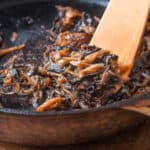
Elke
Without adjusting anything else, how much fresh mushroom do you think could I use? The shrooms have been booming with all the rain this season, and the trumpets are no exception! I'm looking to use up as much fresh as I can... the idea is to use it as a filling in strudel...
Alan Bergo
4 oz or so
lawrence black
Great timing. I just found a whole bunch of trumpets labor day weekend about an hour north of the twin cities. White oaks, near marshy/swampy areas. I made milk braised pork ribs with them first and so I was just needing a new idea. Really appreciate your work Alan.
Joe Wiercinski
Love the technique you describe in this post!. Turns out, I have dried black trumpets and shallots from my garden to try this recipe. Could vegetable stock substitute adequately for "strong homemade stock?" Could the dish be vegan using the demiglace recipe linked here? Whaddya think? https://www.chefsteps.com/activities/umami-bomb-vegetarian-demi-glace
Alan Bergo
You could sure try, totally fine to sub veg stock, you just want something to moisten the mixture so it doesn't dry out. As for the vegan demi, I do not support vegan ideology in the slightest and will never recommend someone use a vegan recipe instead of something that already uses whole foods, as this does.
Joe Wiercinski
I'm a beef-pork-honey-butter-seafood-vegetables-fungi omnivore, too, but one of my mushroom-picking friends subscribes to vegan dietary guidelines. There's so much good foodstuff on the planet and so little time to sample it all.
Alan Bergo
I've been there, Joe. I didn't think you seemed like the vegan type. Yes, there's a lot of good to try out there. I've actually been working with a company that is trying to develop vegan meat products from mushroom tissue..a great way to develop cognitive dissonance. The carmy shallots and trumpets would be just fine using a splash of veg stock--I'd skip the demi.
Joe Wiercinski
Could vegetable stock substitute for "strong homemade stock" so this could be offered as a vegan meal?
How about "vegan demiglace" linked below? Whaddya think? https://www.chefsteps.com/activities/umami-bomb-vegetarian-demi-glace